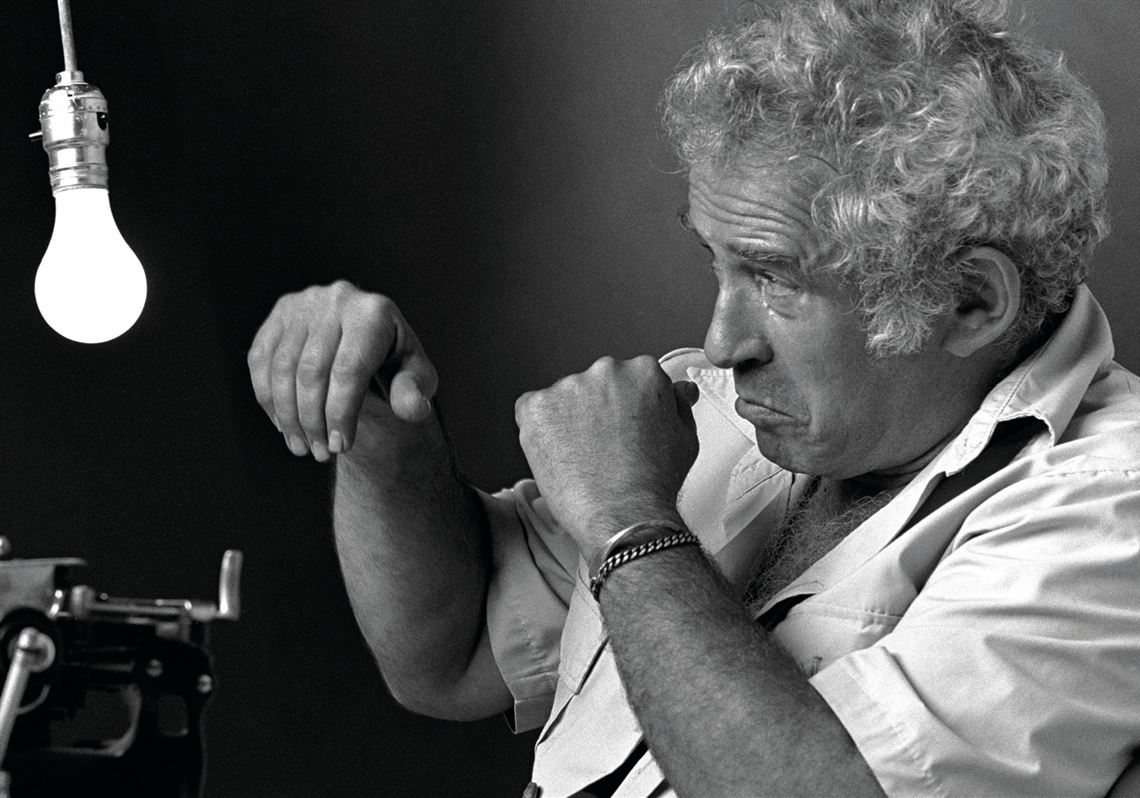Father of New Journalism. Intellectually fearless. Brave. Sensual. All those descriptors would have pleased the writer Norman Mailer, and there’s some truth
to them. But there are other, less flattering ways to characterize Mailer, a Pulitzer Prize winner in non-fiction in 1968 for “Armies of the Night” and in fiction in 1979 for “The Executioner’s Song,” his inquiry into the murderer Gary Gilmore.
Along with “The Naked and the Dead,” the World War II novel that established his reputation in 1948 when he was just 25, those polar Pulitzer Prize winners are Mailer’s best work, suggests Richard Bradford, author of “Tough Guy: The life of Norman Mailer.”
Bloomsbury ($28)
Bradford, who teaches English at Ulster University and the University of Avignon, France, has published more than 30 books, including a biography of Patricia Highsmith, like Mailer a transgressive novelist.
“His life comes as close as possible to being the Great American Novel; beyond reason, inexplicable, wonderfully grotesque and addictive,” Bradford writes in his introduction.
“Tough Guy” covers the tumultuous life of a celebrity writer who had no sense of boundaries. We read about Mailer’s mother, his gambling-addict father, his numerous writings, his 170 IQ, his talent for engineering, his wives, his eight children, and his Rabelaisian self-destruction via drugs and bourbon.
Mailer stabbed his first wife. A promiscuity addict, he was unfaithful to all six, bedding Hollywood stars and starlets along with thought leaders like the feminist powerhouse Gloria Steinem. He ran for mayor of New York City on a loony platform.
He wrote — a lot. And when the writing failed him, he dabbled in film and boxing. His celebrity carried him until debauchery and age crippled and finally killed him, in 2007. He was 84.
This book is appropriately action-packed. The way Bradford accumulates detail effectively reflects Mailer’s protean, and too-frequently nihilistic, character. He was a magnetic lout. But he also was influential, a high-profile contemporary of rivals Gore Vidal, Jack Kerouac and Saul Bellow. Mailer picked fights, notably with Vidal, at a slip of the tongue.
At the same time, particularly in his early fiction, Mailer was a unique and important writer. He supercharged the working-class realism pioneered by James T. Farrell in his Studs Lonigan trilogy, John Dos Passos in his USA trilogy, and John Steinbeck. His was an unmistakable voice no matter how confused or confusing the work. And on a personal level, he could persuade and domineer.
When it came to Mailer, adjectives like “bully,” “abuser,” “philanderer” and “wastrel” also applied. In Bradford’s portrayal, Mailer, while undeniably talented and creative, was a largely despicable and conniving human being.
This harsh portrayal is a tabloid history of a tabloid figure. It also contains its share of literary criticism, scolding “progressive” culturati who have given Mailer a pass for the vigor of his style when the thought behind the work is muddled, even repugnant. Bradford’s discussion of “The White Negro,” the canonization of the hipster Mailer published in 1957, is bitter and illuminating.
On a production note, words are occasionally dropped from the text, and on page 189, in an account of Mailer’s participation in the March on the Pentagon in 1967, the pioneering linguist Noam Chomsky is called Norman.
“Tough Guy” is well-written and lurid, its subject a cautionary tale. It might not propel you to the library in search of other Mailer books like “Advertisements for Myself,” “The Barbary Shore” (a real stinker, opines Bradford) or “Harlot’s Ghost,” the 1,310-page espionage saga Mailer published in 1991.
“Tough Guys,” meanwhile, will hold your attention. Not only has Bradford steeped himself in Mailer material, he has contextualized Mailer’s racism and homophobia — not to mention the misogyny that ran like an app in the background of his marriages.
Carlo Wolff is a freelance writer from Cleveland.
First Published: February 1, 2023, 11:00 a.m.

















